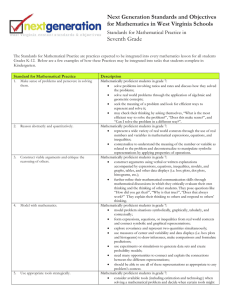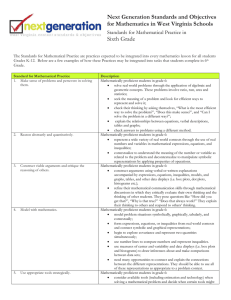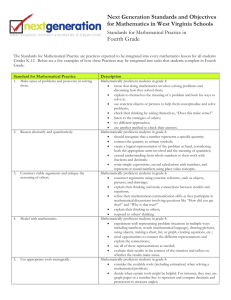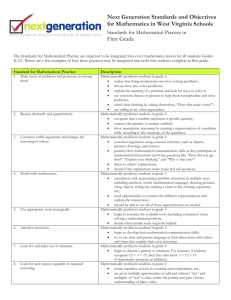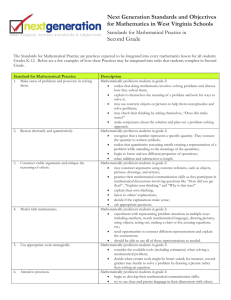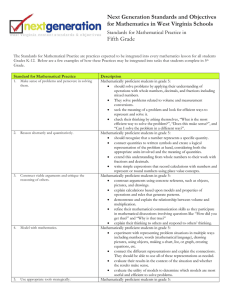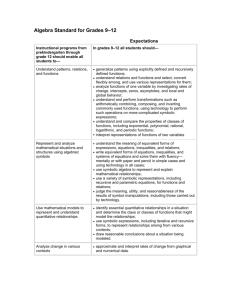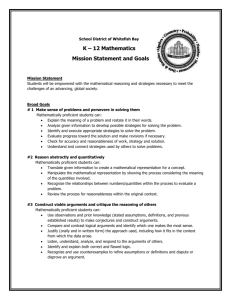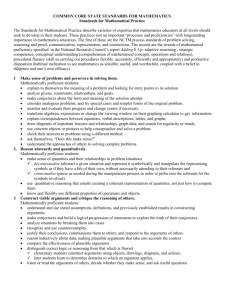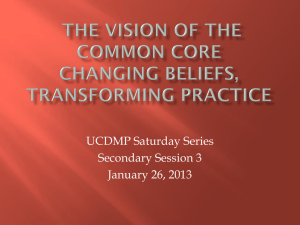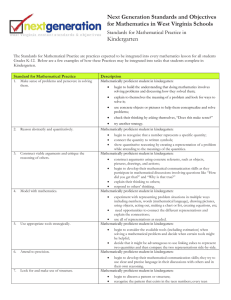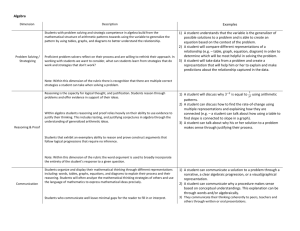Next Generation Standards and Objectives for Mathematics in West Virginia Schools
advertisement
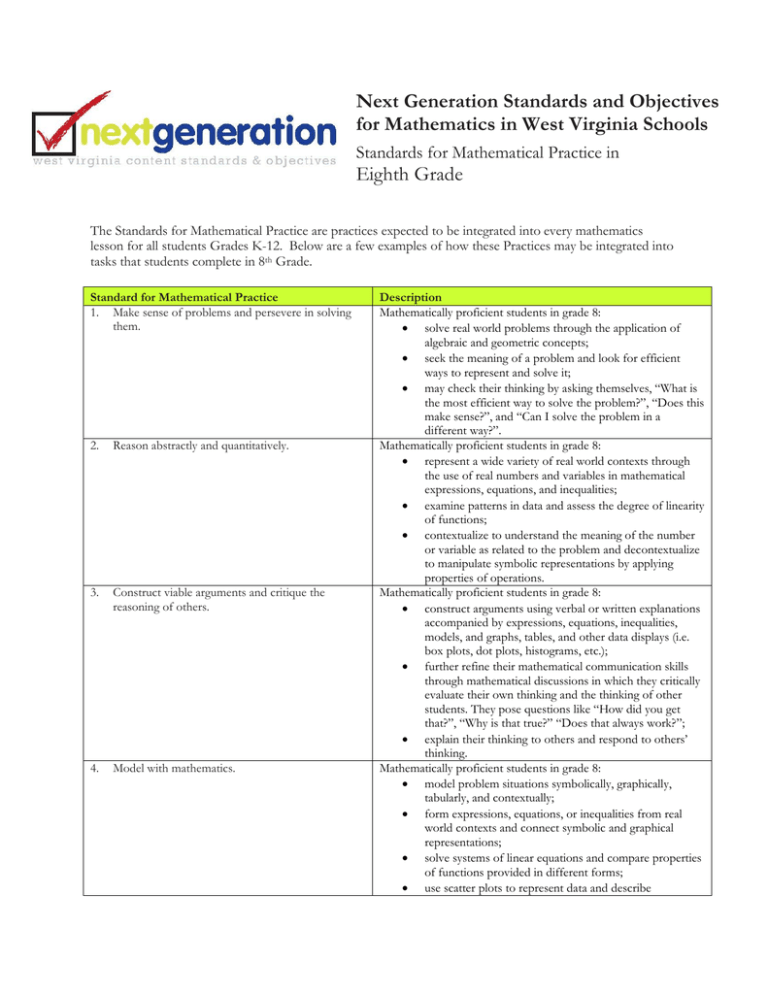
Next Generation Standards and Objectives for Mathematics in West Virginia Schools Standards for Mathematical Practice in Eighth Grade The Standards for Mathematical Practice are practices expected to be integrated into every mathematics lesson for all students Grades K-12. Below are a few examples of how these Practices may be integrated into tasks that students complete in 8th Grade. Standard for Mathematical Practice 1. Make sense of problems and persevere in solving them. 2. Reason abstractly and quantitatively. 3. Construct viable arguments and critique the reasoning of others. 4. Model with mathematics. Description Mathematically proficient students in grade 8: solve real world problems through the application of algebraic and geometric concepts; seek the meaning of a problem and look for efficient ways to represent and solve it; may check their thinking by asking themselves, “What is the most efficient way to solve the problem?”, “Does this make sense?”, and “Can I solve the problem in a different way?”. Mathematically proficient students in grade 8: represent a wide variety of real world contexts through the use of real numbers and variables in mathematical expressions, equations, and inequalities; examine patterns in data and assess the degree of linearity of functions; contextualize to understand the meaning of the number or variable as related to the problem and decontextualize to manipulate symbolic representations by applying properties of operations. Mathematically proficient students in grade 8: construct arguments using verbal or written explanations accompanied by expressions, equations, inequalities, models, and graphs, tables, and other data displays (i.e. box plots, dot plots, histograms, etc.); further refine their mathematical communication skills through mathematical discussions in which they critically evaluate their own thinking and the thinking of other students. They pose questions like “How did you get that?”, “Why is that true?” “Does that always work?”; explain their thinking to others and respond to others’ thinking. Mathematically proficient students in grade 8: model problem situations symbolically, graphically, tabularly, and contextually; form expressions, equations, or inequalities from real world contexts and connect symbolic and graphical representations; solve systems of linear equations and compare properties of functions provided in different forms; use scatter plots to represent data and describe associations between variables; need many opportunities to connect and explain the connections between the different representations; use all of these representations as appropriate to a problem context. Mathematically proficient students in grade 8: consider available tools (including estimation and technology) when solving a mathematical problem and decide when certain tools might be helpful. For instance, students in grade 8 may translate a set of data given in tabular form to a graphical representation to compare it to another data set; might draw pictures, use applets, or write equations to show the relationships between the angles created by a transversal. Mathematically proficient students in grade 8: continue to refine their mathematical communication skills by using clear and precise language in their discussions with others and in their own reasoning. Students use appropriate terminology when referring to the number system, functions, geometric figures, and data displays. Mathematically proficient students in grade 8: routinely seek patterns or structures to model and solve problems; apply properties to generate equivalent expressions and solve equations; examine patterns in tables and graphs to generate equations and describe relationships; experimentally verify the effects of transformations and describe them in terms of congruence and similarity. Mathematically proficient students in grade 8: use repeated reasoning to understand algorithms and make generalizations about patterns; use iterative processes to determine more precise rational approximations for irrational numbers; analyze patterns of repeating decimals to identify the corresponding fraction; during multiple opportunities to solve and model problems, they notice that the slope of a line and rate of change are the same value; flexibly make connections between covariance, rates, and representations showing the relationships between quantities. 5. Use appropriate tools strategically. 6. Attend to precision. 7. Look for and make use of structure. 8. Look for and express regularity in repeated reasoning.
